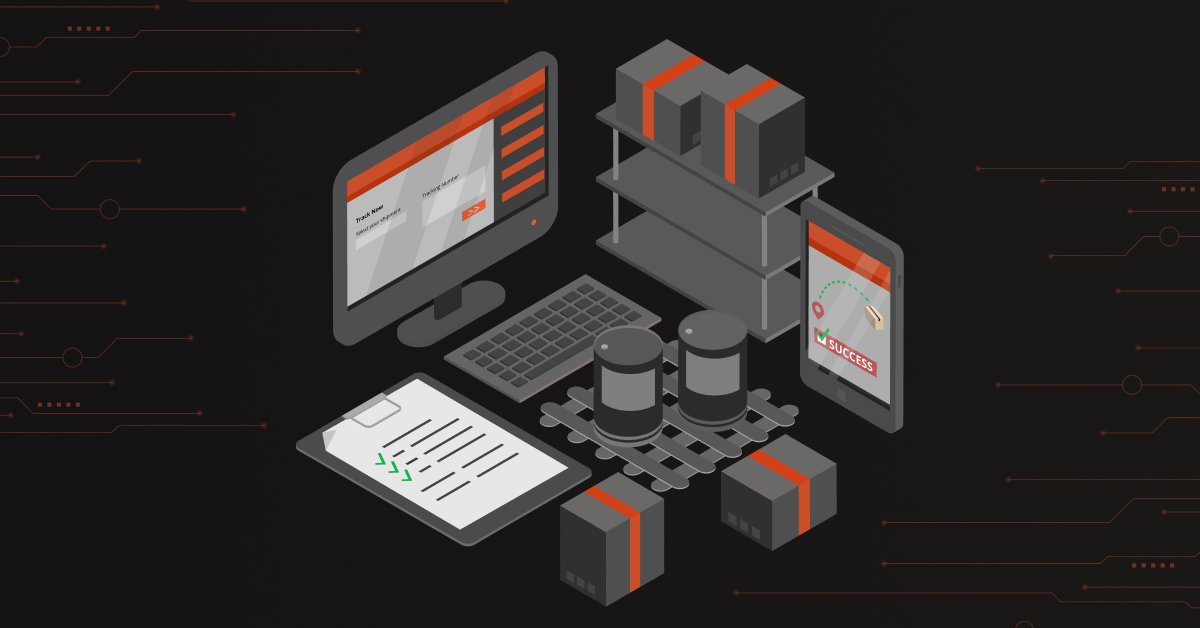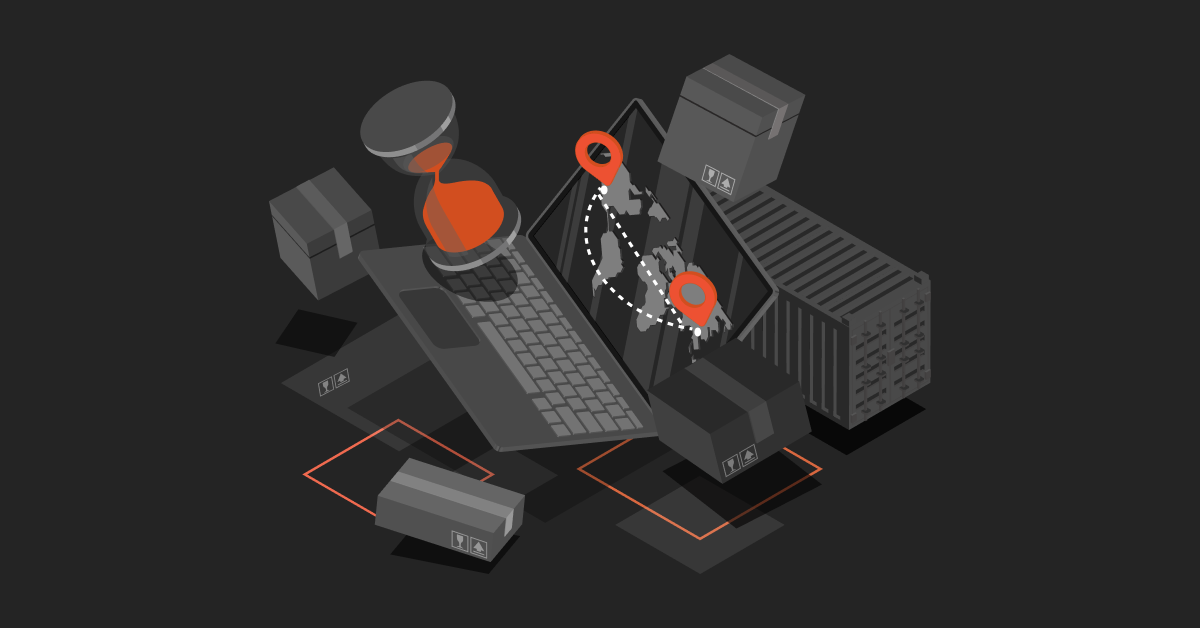Let’s say you’re ordering a new laptop online. Instead of people rushing around to find it, machines take care of everything. They take the laptop from the warehouse, pack it up nicely, print the shipping label and finally ship the order all without needing any human help.
This is how automated order fulfillment works. No manual labor, zero errors and greater accuracy.
Contents
Why Should You Automate Order Processing
Automation in order fulfillment is quite a necessity these days, since customers expect orders on time. Manually processing multiple orders is a hassle and automated order fulfillment systems are built to make these tasks easier for you.
Let’s find out more:
Keeping Track of Orders
Checking different sales platforms for orders takes a lot of time and can be tricky. With an order management system that connects to all your sales channels, everything’s in one place. This system tells you when new orders come in and updates your stock levels across all your online stores, saving you time and avoiding mistakes.
Managing Stock Availability
Manually keeping a track of stock is difficult and order management software makes it easy for all. It helps you keep all your orders organized in one place, allowing you to see what’s available and what needs to be restocked. This way you can prioritize which orders to fulfill first and next
Choosing Cost-Effective Couriers
Choosing the right courier service is important. It has to be cost-effective but efficient. Automated software can help by choosing the best courier for each order based on preset rules. This saves you time and ensures your packages get to your customers on time and at the best price.
Stock Receiving and Stock Checks
Manual stock checks are time-consuming and prone to human errors. Mobile barcode scanning improves accuracy and traceability by allowing warehouse staff to scan stock in and out of locations. It also helps manage misplaced items by showing known locations for each product.
Managing Multiple Warehouse Sites
It is tiring to keep a track on stock if there are multiple warehouse sites. Cloud-based order management software lets you see what’s happening at each site from one place. It also makes tasks like creating shipping notifications and checking stock levels a lot simpler.
Batch Creation and Picking
For businesses with lots of orders, creating and picking batches can take a long time. Order management systems with batch scheduling make this process faster by grouping similar orders together. This helps your warehouse staff work more efficiently and get orders out the door quicker.
Recommended reads: Understanding eCommerce Automation For Distributors
How to Automate Order Fulfillment (Step-by-Step Guide)
Here’s how you can get started with automation:
- Check your current setup: Begin by reviewing how you currently handle orders. Identify any areas that are slow or require excessive manual work.
- Find the Right Software: Look for software that can assist you. Ideally, you want a solution that can track your inventory, automatically sync orders, and integrate well with your ERP and CRM.
- Connect Everything: Make sure your new software can communicate with your online store. This way, when a customer places an order, it gets routed directly to your warehouse without you needing to intervene.
- Keep an Eye on Stock: Utilize inventory management systems to monitor your stock levels and alert you when it’s time to reorder popular products. This helps prevent stockouts and reduce storage costs.
- Smarten Up Your Warehouse: Use technologies such as barcode scanning systems, RFID systems or warehouse management systems to make your warehouse run smoother. Things like automated picking and packing can save time and stop mistakes.
- Make Shipping Simple: Find shipping partners (for example – ShipStation) that help you pick the best way to ship each order. They should also print labels and handle lots of orders at once to speed things up.
- Deal with Returns Easily: Use an order management software that handles returns quickly and easily. It should make return labels, update your inventory, and give refunds without you having to do much.
- Keep Getting Better: Keep an eye on how your new system is working and see if there are any ways to make it even better. Look at the numbers and use them to figure out what’s working well and what needs some tweaking.
Benefits of Automated Order Fulfillment
1. Saves Time: When all of your repetitive tasks are handled by the order management systems, you have ample time to dedicate to other productive works.
2. Reduces Costs: Automating the entire fulfillment process helps you reduce shipping costs by choosing the most economical courier partners. It also aids in preventing losses due to fraudulent orders through features like fraud detection.
3. Eliminates Errors: Automation reduces the chances of errors significantly because it eliminates the need of manual labor. Therefore, no mistakes in order entries, assignments or delivery attempts – Order fulfillment systems act as assistants that flawlessly executes tasks.
4. Collects Data in One Place: All vital data including customer details and purchase history is conveniently stored in one location. This facilitates access to the information, at the right time.
5. Better Customer Experience: Automation ensures timely deliveries, regular updates and proper packaging resulting in customers who are more inclined to make repeat purchases.
What to Consider Before Automating Order Fulfillment
Here’s what you should consider before automating order fulfillment:
Sustainable Success
Make sure your business’s current success isn’t temporary. Check if your success can be sustained over time. If it seems stable, it’s a good indication to explore affordable automation options. However, if there are doubts, it might be a good idea to hold off on major changes for now to avoid potential risks.
Considering All Costs
Don’t just consider the price of automation software, there are multiple hidden costs that you must count. Consider factors like setup costs, integration with existing systems, staff training, and ongoing maintenance. Being aware of all these costs ensures that you’re making a well-informed decision and reduces the probability of any last-minute financial stress.
Anticipating Your ROI
Determine when you expect to see the benefits of automation. If you anticipate significant savings or improvements in a relatively short time frame, don’t hesitate to proceed. Investing in automation can yield long-term benefits for your business.
Warehouse Management Systems (WMS)
A fully automated Warehouse Management system can greatly improve efficiency and speed within your warehouse. It can assist with inventory control, processing orders, and ensuring a seamless operation.
Whether implemented on its own or as part of a larger software suite, a WMS provides functionalities such as barcode scanning, order tracking, and real-time data analysis to enhance warehouse productivity.
Before automating order fulfillment, it is essential to weigh these factors carefully to guarantee a successful shift to automated procedures that will benefit both your business and your customers.
Recommended reads: Understanding Digital Transformation in Logistics and Distribution
Best Practices for Choosing the Right Fulfillment Automation System
When it comes to picking the best automated order fulfillment system for your business, here are some tips to keep in mind:
1. Understand Your Order Management Process: Before you choose any automation software, make sure you know how you handle orders. Take a good look at how you deal with orders. Find out where you are doing things by hand, and where it slows things down.
2. Evaluate Your Customer Demand: Take into account the demand from your customers and how it affects your order processing. Monitor the number of orders you receive on a regular basis and how this fluctuates over time. For instance, you may typically receive 20 orders per day, but during peak seasons like the holidays, this number may increase to 100.
3. Consider Your Customer Base: When choosing an automation software always consider your customer’s needs first. For instance, if your customers value speedy delivery, it’s essential to find a system that can keep up with their expectations.
4. Assess Your Logistics Operations: Take a look at how you handle shipping and other logistics. Look for software that fits in well with how you do things and makes them smoother.
5. Look for Integration with Others: Consider automation software such as DCKAP Integrator that integrates with other systems and tools you already use. This ensures seamless communication between different parts of your business and reduces manual data entry.
Recommended reads: 4 Ways Distributors Can Improve Their Supply Chain Management
Automate Order Fulfillment with DCKAP Integrator
DCKAP Integrator is a cloud-based integration solution that makes order processing super smooth and easy. Here’s how it works:
1. Connects Everything
DCKAP Integrator connects all your different systems together. This means whenever a customer places an order, the information is updated in all your systems in real-time. This helps you to keep a track of your order from processing to delivery without needing any manual work.
2. Automates Tasks
Once the DCKAP Integrator is in place, it takes charge of handling all the repetitive tasks automatically. From processing incoming orders to updating inventory and generating shipping labels, everything is done without the need for manual input.
3. Save Time and Effort
DCKAP Integrator saves you a lot of time and effort. It takes care of the fulfillment processes so that you don’t have to manually enter orders or check inventory levels anymore. It’s all done for you, leaving you free to focus on other important aspects of your business.
4. Reduce Errors
With everything automated, there’s less chance of errors. All the data gets updated in real-time. No more shipping the wrong items or running out of stock unexpectedly. DCKAP Integrator keeps everything running smoothly and accurately.
Click here to know more about DCKAP Integrator or have a look at the interactive product preview.
FAQS
What is automatic order fulfillment?
Automatic order fulfillment refers to completing orders automatically. It involves the implementation of technology like digital warehouse systems and robots to do tasks like order picking, packing, and shipping them automatically. This helps ecommerce companies because they don’t have to rely on people to do these tasks, making the process faster and more accurate.
How can fulfillment automation help reduce labor costs?
Fulfillment automation saves money on labor because it replaces tasks that humans would normally do with automated processes. This includes things like processing orders, picking and packing items, and managing inventory. When businesses use automation for these tasks, they don’t need to hire as many people or spend as much time managing them, which lowers labor costs.
What are the benefits of ecommerce fulfillment automation?
eCommerce fulfillment automation has lots of benefits. It makes operations more efficient, reduces mistakes, speeds up order processing, and makes customer service better. By automating tasks like entering orders, managing inventory, and shipping, businesses can make everything run smoother and give customers a better online shopping experience.
How does fulfillment automation impact supply chain management?
Fulfillment automation also helps with supply chain management. It makes it easier to see what’s going on, reduces the time it takes for things to happen, and makes sure there’s just the right amount of stuff in stock. When businesses automate tasks like processing orders and keeping track of inventory, they can manage their supply chain better, which saves time and money.
What impact does fulfillment automation have on customer service?
Fulfillment automation makes customer service better. When businesses use automation, orders get processed faster and with fewer mistakes. This means customers get their stuff on time and without any problems. Also, automation lets businesses give customers updates and tracking info in real-time, making the whole shopping experience smoother for them.




